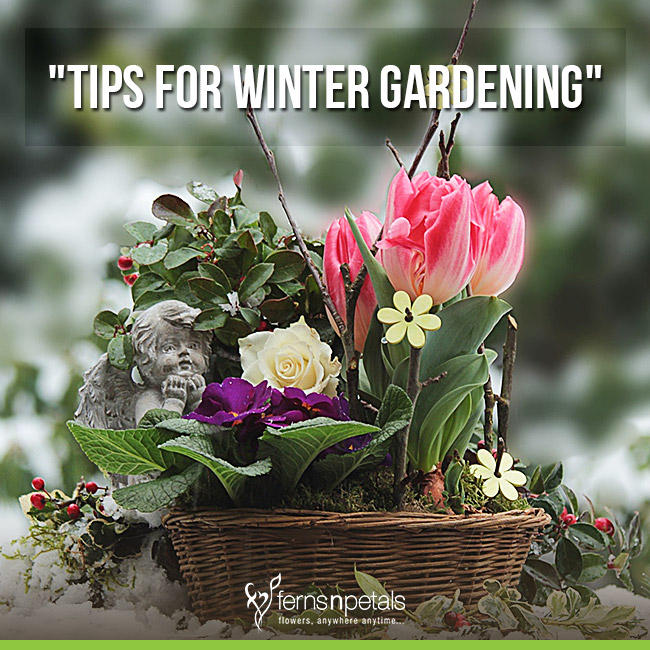How to Start Winter Gardening: Tips for Beginners

As the days grow shorter and the air crisper, many novice gardeners believe it's time to hang up their trowels until spring. But what if we told you that winter gardening can be just as rewarding as tending to your plot in the warmer months? Imagine your garden as a canvas; while summer is vibrant and bold, winter is subtle and serene, with its own unique beauty. So, are you ready to embrace the chill and cultivate a thriving winter garden? Let's dive into our beginner garden guide and explore essential winter gardening tips for beginners.
Understanding Winter Gardening
Winter gardening, or cold season gardening, is about more than just keeping your plants alive through the frost. It's about cultivating hardy, frost-tolerant plants that flourish in the colder months, and maintaining your garden so it's ready to bloom come spring.
Why Venture into Winter Gardening?
Think of winter gardening as a peaceful hike through a snow-covered forest, while summer gardening is like a bustling walk through a lively park. Both have their charms, but winter gardening offers unique benefits:
- Extended growing season: Why limit yourself to a few months of the year? Winter gardening allows you to enjoy fresh produce and beautiful blooms year-round.
- Pest and disease control: Cold temperatures naturally reduce pests and diseases, making winter garden maintenance a breeze.
- Improved soil health: Cover crops and winter plants can enrich your soil and prevent erosion.
Winter Gardening Tips for Beginners
Are you eager to start your winter gardening journey? Here are some tips to help you cultivate a flourishing cold-season garden.
1. Know Your Frost Dates and Hardiness Zone
Before you start winter gardening, it's crucial to understand your local climate. The USDA Plant Hardiness Zone Map is an excellent resource for determining which plants are suitable for your area. Knowing your first and last frost dates will help you plan your winter garden maintenance schedule.
2. Choose the Right Plants
Selecting frost-tolerant plants is key to successful winter gardening. Some cold-hardy vegetables include:
- Spinach
- Kale
- Cabbage
- Brussels sprouts
- Carrots
- Beets
For a splash of color, consider winter-flowering plants like:
- Pansies
- Violas
- Hellebores
- Snowdrops
- Winter jasmine

3. Prepare Your Soil
Preparing your soil in advance is vital for winter plant care. Add a layer of organic matter, such as compost or well-rotted manure, to enrich your soil and improve drainage. This will give your winter plants the best chance of survival.
4. Protect Your Plants
Even the hardiest plants need a little help to brave the cold. Here are some ways to shield your plants from the elements:
- Mulch: Apply a thick layer of organic mulch, like straw or pine needles, to insulate your plants and retain moisture.
- Row covers: Use lightweight fabric row covers to protect your plants from frost and strong winds.
- Cold frames: These portable, bottomless boxes with transparent tops can safeguard your plants from snow and ice.
5. Water Wisely
While it's true that plants need less water in the winter, it's still essential to keep them hydrated. Water your plants deeply once or twice a month, focusing on the root zone. Remember, moist soil retains heat better than dry soil.
6. Maintain Your Garden
Winter garden maintenance is minimal but necessary. Keep your garden tidy by removing dead leaves and debris, which can harbor pests and diseases. Prune dead or damaged branches to encourage healthy growth in the spring.
Embrace the Beauty of Winter Gardening
Winter gardening is like a slow-cooked meal, requiring patience and care, but the results are oh-so-rewarding. By nurturing your garden through the cold season, you'll be greeted with a lush, vibrant landscape come spring.
Additional Resources
For more winter gardening tips for beginners, explore these authoritative resources:

Conclusion
Embarking on your winter gardening journey is an adventure filled with wonder and discovery. By understanding your climate, choosing the right plants, and providing proper care, you'll cultivate a garden that thrives throughout the cold season. So, grab your gloves and let's get started!
FAQs
Q: Can I start a winter garden if I live in a very cold climate? A: Yes, even in harsh climates, you can grow cold-hardy plants or use protective structures like cold frames or hoop houses.
Q: What is the best way to protect my plants from frost? A: Use a combination of mulch, row covers, and cold frames to insulate your plants and shield them from frost.
Q: How often should I water my winter garden? A: Water your plants deeply once or twice a month, focusing on the root zone. Adjust the frequency based on your local weather conditions.
Q: What are some easy-to-grow winter vegetables? A: Spinach, kale, cabbage, Brussels sprouts, carrots, and beets are all excellent choices for a beginner winter garden.
Q: How do I prepare my soil for winter gardening? A: Add a layer of organic matter, such as compost or well-rotted manure, to enrich your soil and improve drainage before planting your winter garden.
0 Response to "How to Start Winter Gardening: Tips for Beginners"
Post a Comment